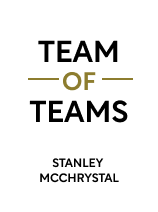

This article is an excerpt from the Shortform book guide to "Team of Teams" by Stanley McChrystal. Shortform has the world's best summaries and analyses of books you should be reading.
Like this article? Sign up for a free trial here .
What is the MECE framework? How does it work and what are its limitations?
The Mutually Exclusive Collectively Exhaustive (MECE) framework is an organizational management system where an organization is divided into units that don’t overlap but collectively cover everything. The main limitation of the MECE framework is that this division limits the ability of units to function adaptively when the situation calls for it.
Learn about the MECE framework of organizational management.
What Is the MECE Framework?
The MECE framework is a management system where an organization is divided into specialized functions that are mutually exclusive (they don’t overlap), but collectively exhaustive (they collectively cover everything). The idea is that a leader assigns tasks and if each unit or department does its job well without worrying about any other unit or about understanding the whole (that is, stays in its box), the organization will function effectively.
One of the notable real-world examples of a MECE structure is the US task force. The task force’s teams and departments were organized according to the MECE principle during their operations in Iraq, but the result was often ineffectiveness. For example:
1) Joint Task Force Drills
The task force had regular training exercises bringing together SEALs, Army Rangers, and Army Special Forces in joint operations—for example, they practiced a terrorist scenario that simulated the capture and rescue of a group of American diplomats at an airport in East Asia. SEALs and Rangers attacked assigned targets and killed “terrorists,” and special forces rescued the “hostages.” Overall, the exercise worked flawlessly, but each team operated vertically, staying in its silo and connecting with its own command, but not connecting with other teams. Each was concerned only with its specific objective.
While this type of carefully planned, intricate operation worked for addressing a focused and predictably unfolding crisis, the situation in Iraq was different. Teams in Iraq needed to be able to communicate and work together in fluid, unpredictable operations against AQI.
2) An Intelligence Disconnect
The MECE structure also impeded operations at the headquarters level. On an inspection tour of the task force intelligence facility at the Baghdad airport, McChrystal found bags of unopened intelligence material (documents, computers, and cell phones) seized during commando raids, which had never been analyzed. By the time the backlog of intelligence was likely to be analyzed, it would be useless.
Because the teams collecting the material had no contact with the people analyzing it, the analysts didn’t know how to prioritize or organize it. While the teams could each come up with better individual procedures for handling the intelligence material, what they really needed was to communicate with each other so that the most important information could be quickly examined.
McChrystal found such chokepoints or disconnects between all teams. Instead of living and functioning parallel to each other, the teams needed horizontal connections rather than more top-down planning before the task force could function effectively as a whole. Chokepoints also existed among the task force and the large organizations it needed to work with, including the CIA, FBI, and NSA.
Imagine playing a sport like soccer within a MECE framework, where players ignored each other and the ball, while watching and waiting for orders from the coach. The coach couldn’t communicate plans to all the players as the game continually changed; the players needed to be able to work together and improvise.
Scaling Teamwork Within the MECE Framework
While a MECE framework limits teams’ and the overall organization’s ability to be fully adaptive and effective, the solution isn’t simple: Scaling up the strengths of teams, done in the wrong way, could lead to chaos.
When you enlarge teams, you run into the economic principle of diminishing marginal returns, which states that with goods and services, each unit you add brings less value than the previous one. For example, if you start eating a succession of sandwiches when you’re hungry, you’ll greatly enjoy your first sandwich, but each one you eat after that will bring less satisfaction than the one before.
In terms of manpower, the phenomenon of diminishing returns is sometimes described as having too many cooks in the kitchen. Beyond a certain number, teams lose their essential cohesiveness. The threshold number of additional members adding value before setting off diminishing returns varies. For an intimate conversation it would be a small number of people, while for producing something on a manufacturing assembly line it could be large. In many sports, teams have 15 or fewer players playing at a time. In the military, SEAL teams have 16-20 and Army Ranger platoons have 42.
Further, teams with strong internal bonds tend to compete with other teams in a unit or even beyond it (for example, with other branches of the service). The view is that everyone outside the team “sucks,” as a SEAL described it. With the task force, a team’s goal of performing its mission better than another team might not align with the task force’s definition of victory (winning the war). So managing teams within the MECE framework gets more complex as teams and organizations grow.

———End of Preview———
Like what you just read? Read the rest of the world's best book summary and analysis of Stanley McChrystal's "Team of Teams" at Shortform .
Here's what you'll find in our full Team of Teams summary :
- How General Stanley McChrystal transformed the U.S. Joint Special Operations Task Force
- What teams that operate well can offer to an organization
- How the team of teams organizational model helped bring down a major Al Qaeda leader






